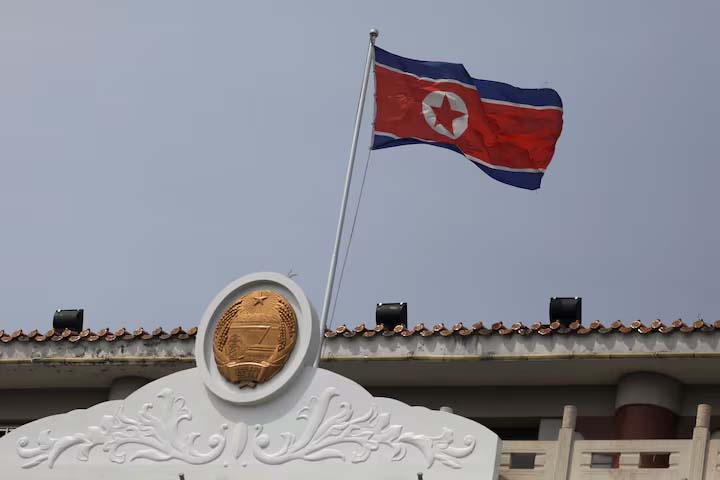North Korea ship can carry dozens of missiles

SINGAPORE—North Korea’s new class of warship can accommodate dozens of vertical launch cells to carry missiles its military has already developed, analysis of a satellite image showed, a step that would give its navy more punch and create an export opportunity. Little is known about the unnamed class of ships being built in the Chongjin and Nampo shipyards.
In December, South Korea’s military said they would displace about 4,000 tons, somewhat less than half the size of a US Arleigh Burke-class destroyer.
Images captured of the ship in Nampo in the last week of March, however, show cavities on its deck large enough to hold more than 50 missiles, depending on their type, said researcher Jeffrey Lewis.
“They’re pretty big cavities,” said Lewis, director of the East Asia Nonproliferation Program at James Martin Center for Nonproliferation Studies at Middlebury Institute of International Studies in California.
“I would think 32 (missiles) in front and a few in the back would be a very reasonable number. Or it could be a much smaller number of ballistic missiles.” Vertical launch systems (VLS) allow ships to carry more missiles, and make launching and reloading easier.
Lewis said North Korea had developed several different types of missile that would be compatible with VLS cells, which Pyongyang had not fielded on any previous surface ship. Such types include antiship cruise missiles, land attack cruise missiles, air defense missiles and submarine-launched ballistic missiles, he added.
The new ships’ armament seemed to hew close to South Korean navy standards, said Euan Graham, a senior analyst at Australian Strategic Policy Institute.
“I think we have to take conventional enhancements seriously, because North Korea has limited resources and has invested in nuclear weapons to close the deterrence gap with the Republic of Korea and United States,” he added.
Reuters, the news and media division of Thomson Reuters, is the world’s largest multimedia news provider, reaching billions of people worldwide every day. Reuters provides business, financial, national and international news to professionals via desktop terminals, the world's media organizations, industry events and directly to consumers.

















